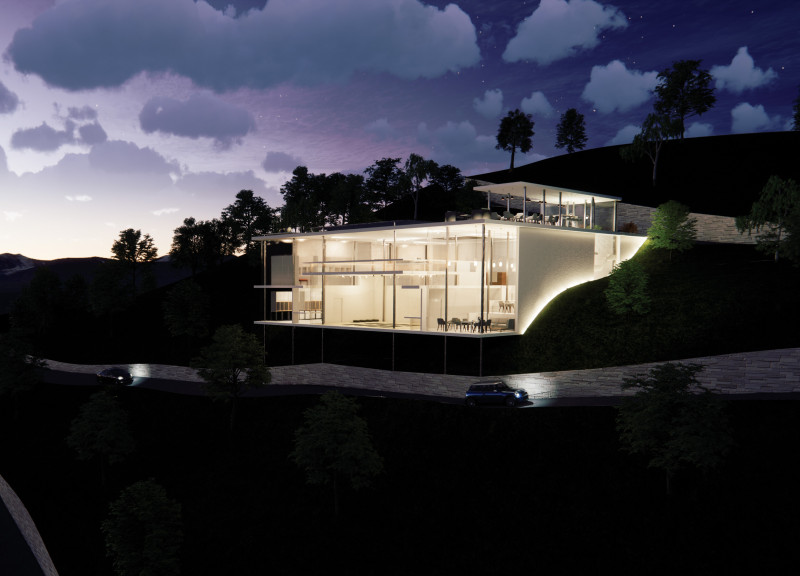5 key facts about this project
At its core, the project represents a thoughtful integration of form and function, aiming to enhance the user experience while fostering a sense of place within the community. The design achieves this through a careful balance of aesthetics and practicality, creating spaces that are not only visually appealing but also highly functional. The architecture is designed to accommodate [discuss the primary functions, such as residential living, community gathering, workspace], thereby serving multiple needs and contributing to the well-being of its users.
The main building features an open floor plan, characterized by a fluidity that encourages interaction among its inhabitants. This layout is complemented by strategically placed windows and openings that allow for ample natural light, establishing a connection between the indoor and outdoor environments. The selection of materials plays a crucial role in the overall design, with an emphasis on sustainability and local sourcing. Key materials include concrete for structural integrity, glass for transparency and connection to the surroundings, wood for warmth and texture, steel for its modernity, and natural stone for landscaping features. This thoughtful material palette not only enhances the project’s aesthetic but also aligns with broader environmental goals by promoting durability and reducing maintenance.
Unique design approaches are evident in various aspects of the architecture. The building's facade is a prime example, incorporating innovative treatments that create visual interest while maximizing energy efficiency. The use of cladding combined with green walls integrated into the design not only enhances the thermal performance of the structure but also promotes biodiversity, allowing flora to flourish in an urban setting. This design choice reflects a commitment to environmental stewardship, encouraging a symbiotic relationship between architecture and nature.
Moreover, the project emphasizes a community-oriented approach. Public spaces are thoughtfully designed to encourage social interaction and engagement. Features such as outdoor gathering areas, landscaped parks, and accessible pathways invite community members to utilize the space fully, fostering a sense of belonging and encouraging a vibrant atmosphere. The layout also takes into consideration pedestrian flows, ensuring that the design accommodates the movement patterns of the community, thus enhancing usability.
Modern technology has been seamlessly integrated into the architecture, allowing for innovative solutions that improve the functionality of the spaces. Smart building systems have been implemented to optimize energy usage, providing a more sustainable living environment that reflects current trends in architectural design. These systems are designed to be user-friendly, ensuring that technology enhances rather than complicates the user experience.
Through its architectural plans, sections, and various design strategies, the project exemplifies a forward-thinking approach to contemporary architecture. The attention to detail, commitment to sustainability, and focus on community make this project a notable example of how architecture can positively influence urban living. Readers interested in gaining a deeper understanding of this innovative architectural design are encouraged to explore the project presentation further, reviewing architectural designs, sections, and plans for additional insights into the thoughtful decisions shaping this exemplary project.






















